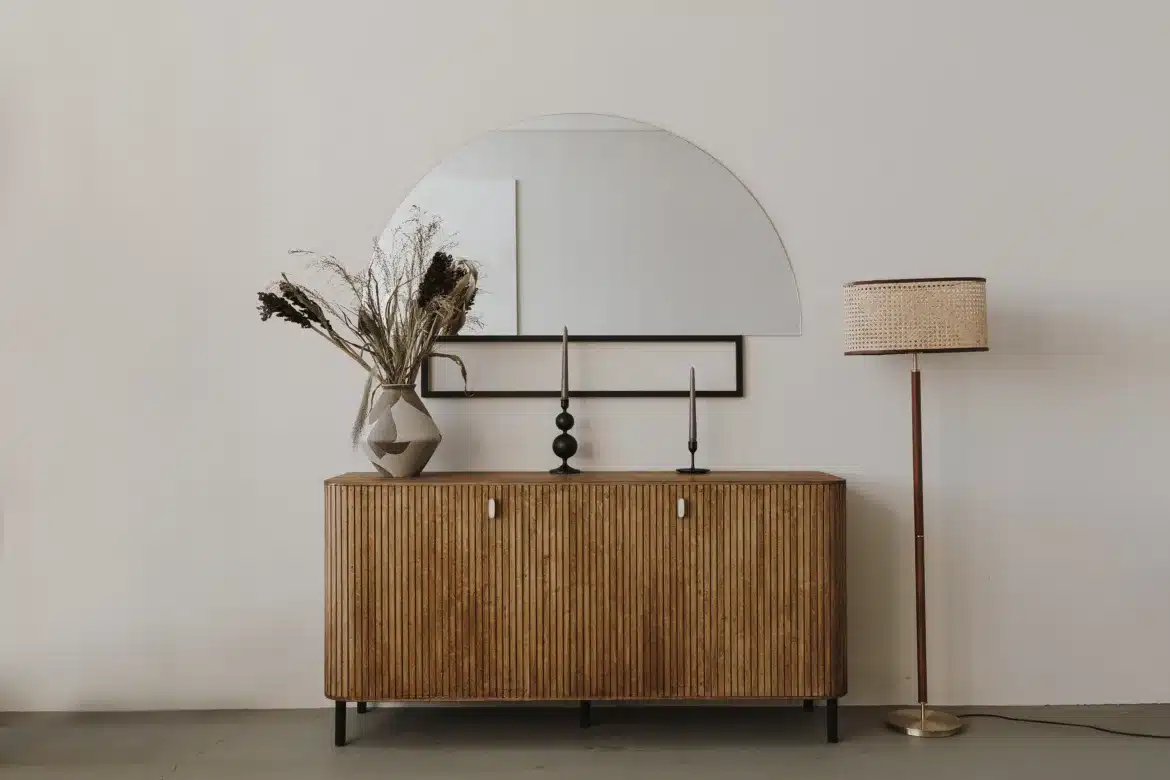Making your home or office a statement of sophistication isn’t solely about the grandeur of the space; it’s a melodic dance of form and function, something to which iconic furniture design has long catered. This marriage between form and function isn’t a contemporary feat; it stands as the nucleus of design philosophy that architects, interior designers, and connoisseurs have celebrated for decades. In this deep-seated exploration, we’ll venture into the origins of this synergy, highlighting timeless pieces that continue to captivate and inspire, and providing insights into how designers and enthusiasts can mirror this harmonious design ethos in their personal or professional undertakings.
The Genesis of Harmonious Design
The concept of form meeting function is often traced back to the Bauhaus school in Germany. With visionary architects and designers like Walter Gropius and Mies van der Rohe at the helm, Bauhaus pioneered a holistic approach to design, merging the mechanical aspects of production with fine art, and emphasizing the marriage of form and function in all facets of life. This period of revolutionary design canonized a stream of furniture pieces that resonate with the notion, such as Marcel Breuer’s Wassily Chair and Ludwig Mies van der Rohe’s Barcelona Chair, marking a significant paradigm shift in design philosophy.
Bridging the Gaps in Early Modernism
Early modernists were driven by a compelling vision — to make beautifully designed furniture accessible to a broader market. This period, starting in the late 19th century up to the mid-20th century, saw designers challenge the norms, experiment with materials, and reject the superfluous in favor of simplicity and practicality. The results were furniture pieces that stood the test of time, straddling the line between austerity and elegance.
The Impact of Mid-Century Modernism
Mid-century modernism, often seen as an extension of early modernist ideals, continued to champion the ‘less is more’ philosophy. Innovators like Charles and Ray Eames and Eero Saarinen conceptualized pieces that were sleek, efficient, and undeniably stylish. Their chairs, tables, and case goods, many of which are still in production today, showcased an unmatched commitment to ergonomic excellence without sacrificing aesthetic appeal.
Iconic Furniture That Redefined Design Paradigms
To fully understand the concept of form and function, it’s best exemplified through the details and stories behind iconic furniture. These masterpieces, each with a tale of innovation and purpose, have not just transcended time but have also influenced contemporary design thinking, exemplifying the Bauhaus design intention of shaping the future.
The Eames Lounge Chair and Ottoman
Designed by Charles and Ray Eames in the 1950s, the Eames Lounge Chair and Ottoman has become the quintessential symbol of comfort and luxury. Inspired by the traditional English club chair, the husband-and-wife duo reimagined the design to fit the modern home – combining sumptuous leather with molded plywood and a recognizable silhouette that evokes the feeling of a well-worn baseball mitt. This chair speaks profoundly to the Eames philosophy — to create the best for the most for the least — with ergonomics and aesthetics in perfect unison.
The Barcelona Chair
Crafted by Mies van der Rohe and Lilly Reich for the 1929 Barcelona Exposition, the Barcelona Chair exemplifies the Bauhaus ideal. A design so iconic, it’s the benchmark of modernist design in countless architect’s offices around the world. The chair’s ‘X’ frame is a marvel of minimalist design, supporting leather cushions that effortlessly cater to both its supportive and aesthetic functions. It stands as an emblem of the influential architectural movement, a visual statement of luxury that still retains an air of cool, intellectual reserve.
Navigating Fusion in Contemporary Design
While iconic pieces serve as historical benchmarks, contemporary design constantly transverses the boundaries, seeking new fusions. In a time where design trends are as lithe as a blade of grass in a summer breeze, how do designers and enthusiasts continue this legacy of harmonious design while also pushing the envelope?
Sustainability Meets Aesthetic
Today’s climate of environmental consciousness has brought about a resurgence in forms that celebrate natural materials and multifunctional pieces. The push for sustainable manufacturing has seen a rise in furniture that embodies a ‘form follows function’ ethos, while also treading lightly on the planet. Pieces designed to serve more than one purpose, or featuring longevity-enhancing modularity, are gaining ground, with beauty crafted from the imperfections of natural materials being celebrated.
Cutting-Edge Meets Comfort
The rapid advancements in technology have had a profound impact on contemporary furniture design. It’s no longer just about appearance, but about intelligent furniture that changes with the push of a button or responds to our lifestyle. These pieces mirror how we’ve come to view our homes and workspaces — as adaptable, smart environments. From couches with wireless charging capabilities to tables that double as Wi-Fi hotspots, the cutting edge meets comfort in a rapidly transforming world of design.
A Call to Architects and Designers
The pursuit of a perfect marriage between form and function isn’t merely an aesthetic endeavor; it’s a philosophical assertion of the role of design in our lives. It’s a call for architects and designers to strike the balance that inspires as much as it serves. With the foundations laid by those before us, it’s through our current and future design inventions that we can continue writing the story of form and function.
Balancing the Reality of Cost, Time, and Materials
In the trifecta of cost, time, and materials, achieving the perfect balance can be an unforgiving challenge. However, it’s this matrix that often separates the visionary from the merely talented. The ability to realize designs that are revolutionary but practical, stunning but affordable, and innovative but sustainable is where the true genius of modern designers lies.
Fostering Creativity Within Parameters
Constraints have a formidable way of breeding creativity. While it’s essential to dream big, the framework within which you design often determines the impact of your work. It’s within these boundaries that architects and designers alike should seek to innovate — by challenging preconceived notions and crafting designs that are not just timeless in aesthetic, but also in their utility.
Cultivating the Iconic in Your Personal Space
For the enthusiast or homeowner, fostering an environment that champions form and function can be a deeply personal endeavor. It’s about more than just acquiring statement pieces; it’s about curating a collection that tells a story and serves a purpose.
Curating a Home That Speaks to You
Building a home around iconic furniture involves more than mere decoration. It’s an introspective navigation of your tastes, personality, and values. Each piece serves as a reflection of your narrative, bringing not just aesthetic joy, but a sense of functionality and belonging.
The Role of Iconic Furniture in Everyday Life
Iconic furniture has a powerful way of transforming how we interact with our spaces. Each piece is a deliberate choice, an affirmation of your design philosophy, and a catalyst for the experience you wish to cultivate in your home. It’s a testament to the lasting impact a single, well-crafted chair or table can have on the overall design and feel of a room.
Conclusion
The marriage of form and function in iconic furniture design is a testament to the profound possibilities that open up when we marry artistic vision with practical utility. From the Bauhaus to the modern day, each iconic piece weaves a story of its own — a narrative celebrating design’s unyielding power to shape our surroundings and elevate our human experience. It’s not just about the names etched into these timeless pieces; it’s about the ideals they represent and the inspiration they continue to offer to architects, designers, and enthusiasts worldwide. In the end, it’s these marriages — whether between material and structure, space and light, or form and function — that define the enduring legacy of design and promise a future where everything we create is both useful and beautiful.



